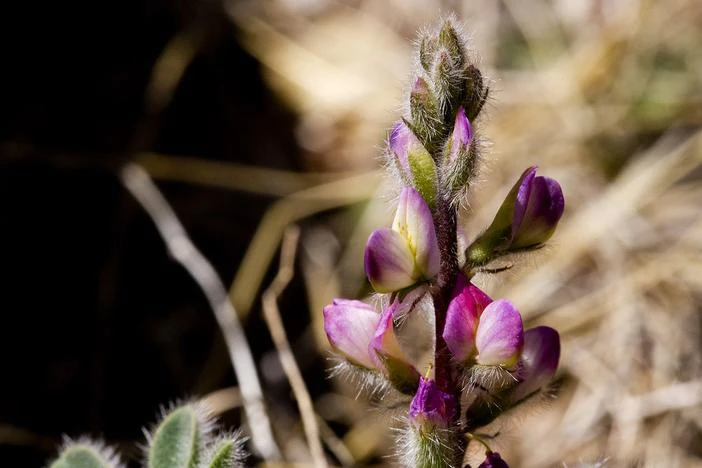Bajada Lupine
(Lupinus concinnus)
Bajada Lupine (Lupinus concinnus)
/
/

Cecelia Alexander
CC0 1.0
Image By:
Cecelia Alexander
Recorded By:
Copyright:
CC0 1.0
Copyright Notice:
Photo by: Cecelia Alexander | License Type: CC0 1.0 | License URL: https://creativecommons.org/publicdomain/zero/1.0/ | Uploader: aspidoscelis | Publisher: Flickr





























Estimated Native Range
Climate Requirements for Edinburg, Texas
| This Plant | Your Site | Plant Suitability for Your Location | ||
|---|---|---|---|---|
| • Precipitation | 3" - 55" | 24" | Your precipitation may be too high for this plant. | Too high |
| • High Temp. | 65°F - 110°F | 97°F | Your summer temperatures are normal for this plant. | Excellent |
| • Low Temp. | 10°F - 54°F | 48°F | Your winter temperatures are normal for this plant | Excellent |
This plant may not grow well at your location - your precipitation is too high.
Summary
Lupinus concinnus, commonly known as Bajada lupine, is an annual herb native to arid and semi-arid regions, including desert scrub, sandy washes, and open areas within chaparral and sagebrush communities in the southwestern United States from California to Texas and northern Mexico. It typically grows 4-12 inches in height, with hairy stems and small palmate leaves composed of 5 to 9 leaflets. Bajada lupine is notable for its dense spirals of showy flowers that can be purple, pink, or nearly white, each measuring 0.2-0.5 inches long, blooming in the spring. The fruit is a hairy legume pod approximately 0.4 inches long.
Bajada lupine is valued for its ability to thrive in poor, sandy soils and its low water requirements, making it suitable for xeriscaping and naturalistic plantings in arid regions. Its vibrant flowers attract pollinators, adding to the ecological value of gardens and landscapes. While it is not commonly used in large-scale cultivation, it can be a charming addition to rock gardens, borders, and wildflower meadows. Bajada lupine requires full sun and well-drained soils. It is relatively free of serious pests and diseases but can be susceptible to root rot if overwatered.CC BY-SA 4.0
Bajada lupine is valued for its ability to thrive in poor, sandy soils and its low water requirements, making it suitable for xeriscaping and naturalistic plantings in arid regions. Its vibrant flowers attract pollinators, adding to the ecological value of gardens and landscapes. While it is not commonly used in large-scale cultivation, it can be a charming addition to rock gardens, borders, and wildflower meadows. Bajada lupine requires full sun and well-drained soils. It is relatively free of serious pests and diseases but can be susceptible to root rot if overwatered.CC BY-SA 4.0
Plant Description
- Plant Type: Herb
- Height: 0.5-1.5 feet
- Width: 0.5-1 feet
- Growth Rate: Moderate
- Flower Color: Purple, Red
- Flowering Season: Spring
- Leaf Retention:
Growth Requirements
- Sun: Full Sun
- Water: Low
- Drainage: Fast
Common Uses
Bee Garden, Butterfly Garden, Low Maintenance
Natural Habitat
Native to arid and semi-arid regions, including desert scrub, sandy washes, and open areas within chaparral and sagebrush communities
Other Names
Common Names: Mojave Lupine, Elegant Lupine, Scarlet Lupine
Scientific Names: Lupinus concinnus, Lupinus concinnus var. concinnus
GBIF Accepted Name: Lupinus concinnus